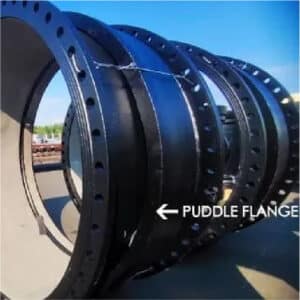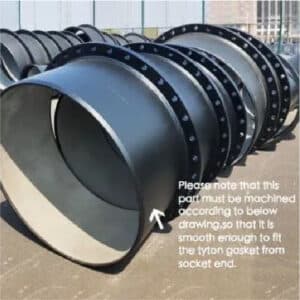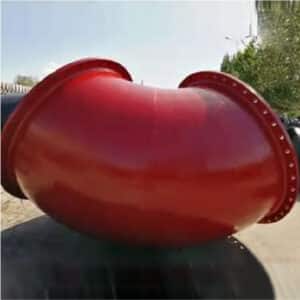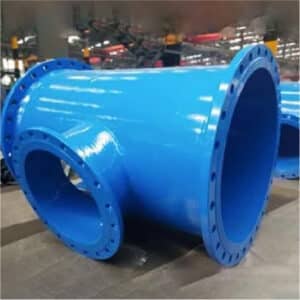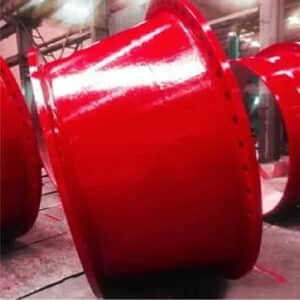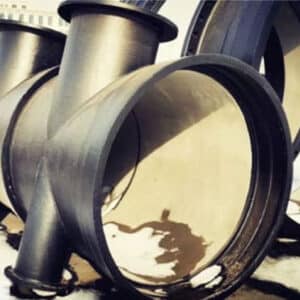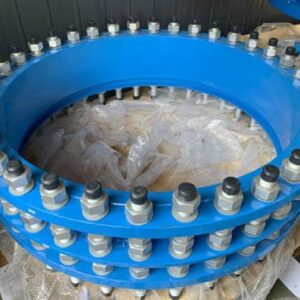All Socket Tee
All Socket Tee, is a type of pipe fitting that is used to join three sections of pipe at a right angle.
It has three openings: one on each end and one in the center, forming a “T” shape.
The connections are made by inserting the pipe into the socket and then form sealing by the Tyton gasket.
Socket tees are commonly used in water pipeline applications where a secure and leak-proof connection is required.

All Socket Tee Drawing
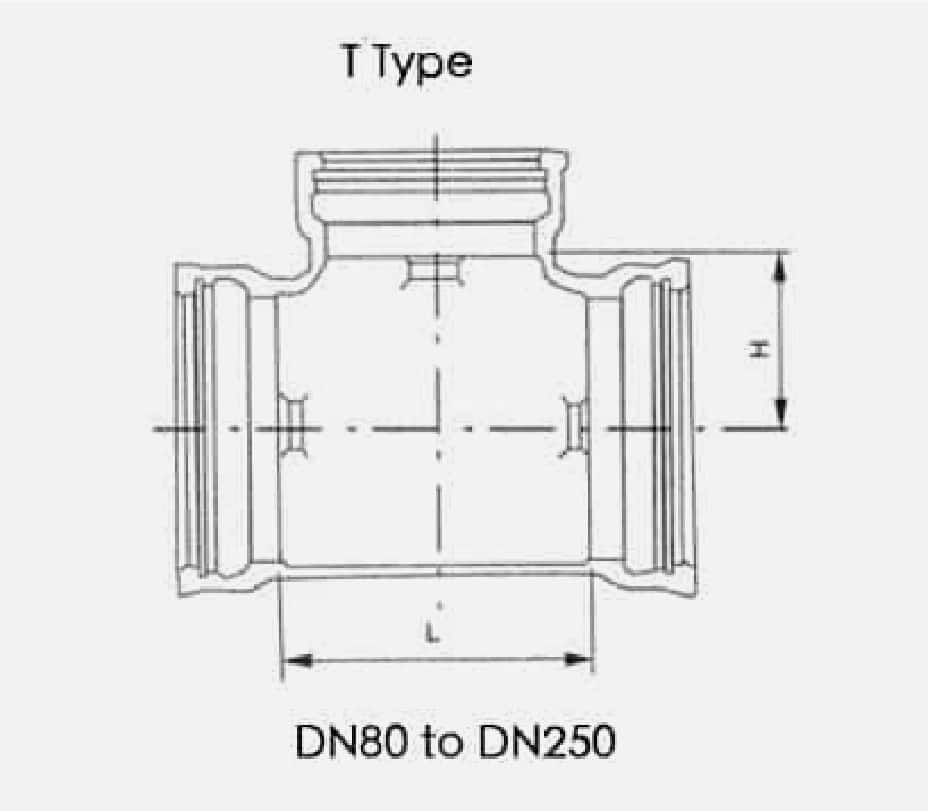
T type DN80 to DN250

T type DN300 to DN600
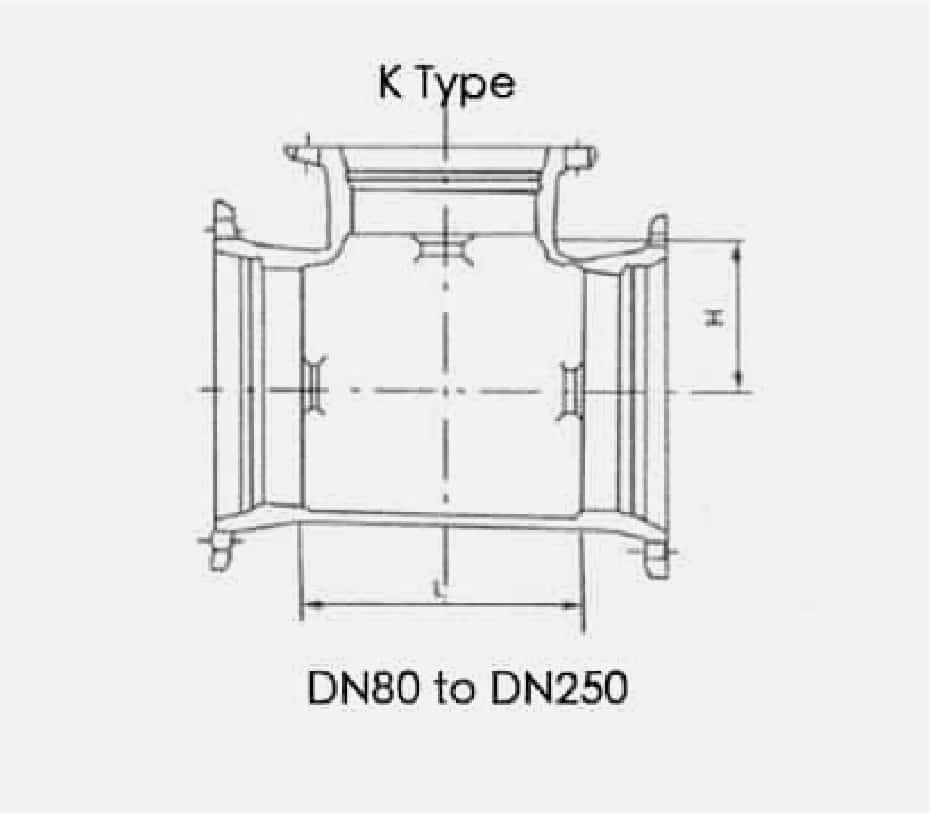
K type DN80 to DN250
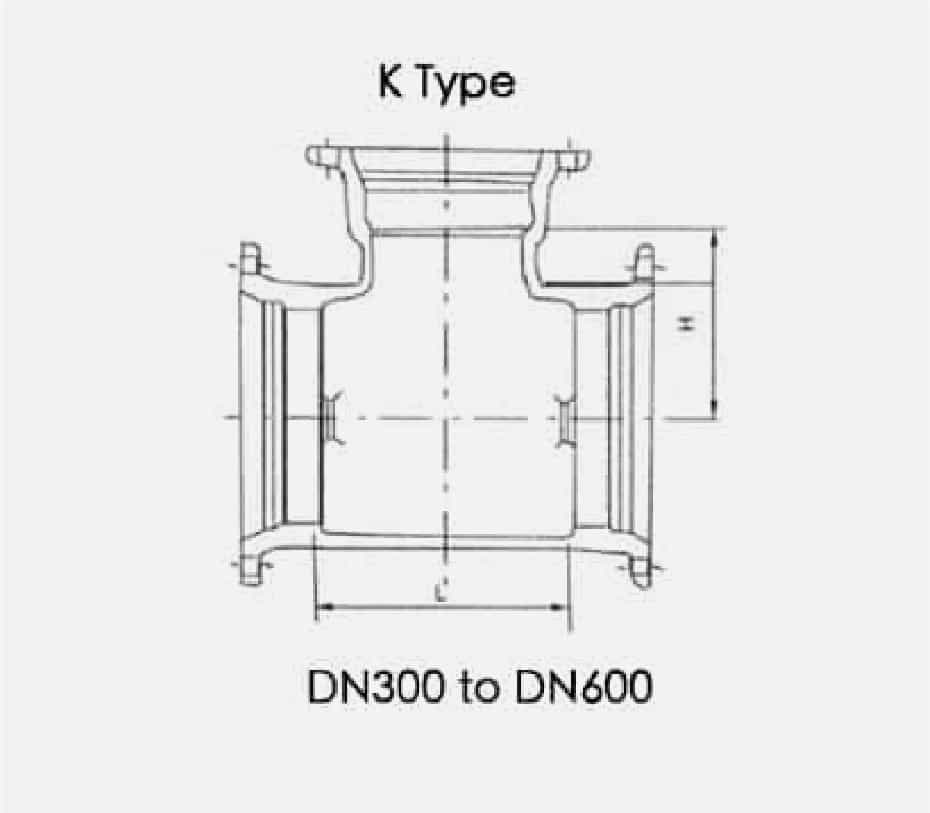
K type DN300 to DN600
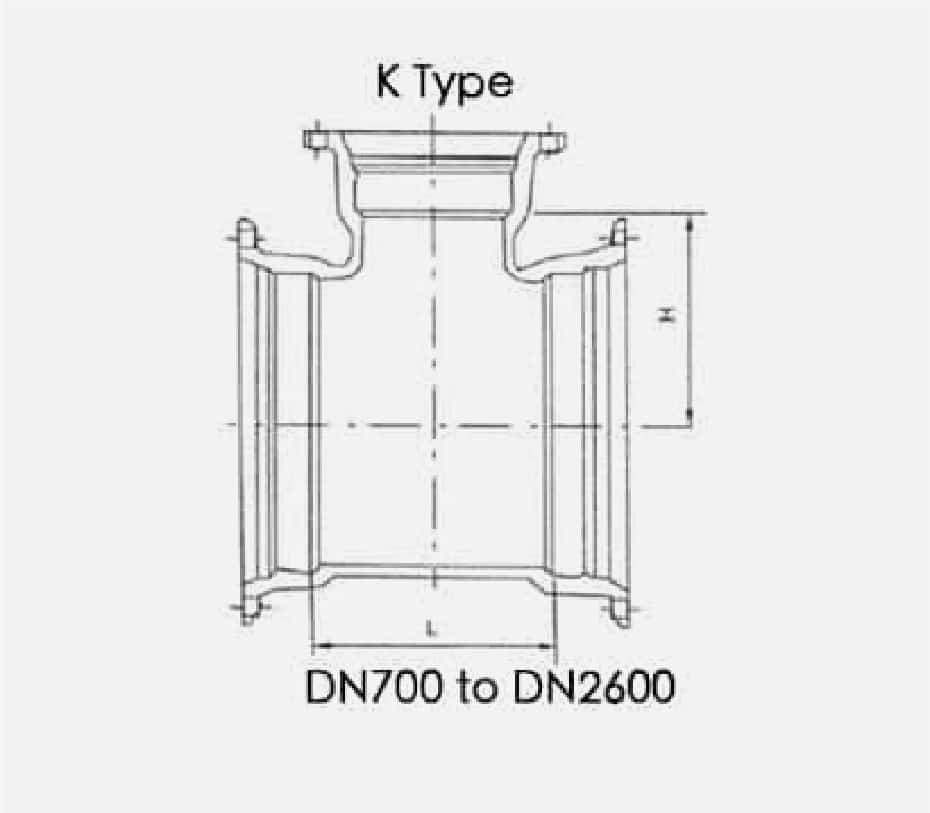
K type DN700 to DN2600
All Socket Tee Dimensions
| Nominal Diameter DN | Nominal Diameter dn | L | H | Mass(kg) T Type | Mass(kg) K Type |
|---|---|---|---|---|---|
| 80 | 80 | 170 | 85 | 12.5 | 17.7 |
| 100 | 80 | 170 | 95 | 14.8 | 21.5 |
| 100 | 100 | 190 | 95 | 16.1 | 23.5 |
| 150 | 80 | 170 | 120 | 21.5 | 29.5 |
| 150 | 100 | 195 | 120 | 23.5 | 31 |
| 150 | 150 | 255 | 125 | 28 | 35.6 |
| 200 | 80 | 175 | 145 | 30 | 37.9 |
| 200 | 100 | 200 | 145 | 32 | 38.8 |
| 200 | 150 | 255 | 150 | 37 | 45 |
| 200 | 200 | 315 | 155 | 43 | 50.5 |
| 250 | 100 | 200 | 170 | 42 | 49 |
| 250 | 150 | 260 | 175 | 48 | 61 |
| 250 | 200 | 315 | 180 | 54 | 63.5 |
| 250 | 250 | 375 | 190 | 55 | 71.5 |
| 300 | 100 | 205 | 195 | 59 | 66.5 |
| 300 | 150 | 260 | 200 | 70 | 80.5 |
| 300 | 200 | 320 | 205 | 72 | 84 |
| 300 | 300 | 435 | 220 | 81 | 106 |
| 350 | 100 | 210 | 225 | 67.5 | 78 |
| 350 | 150 | 260 | 230 | 79.6 | 95 |
| 350 | 200 | 320 | 235 | 85 | 98 |
| 350 | 300 | 380 | 240 | 106 | 122 |
| 350 | 350 | 495 | 250 | 116 | 133 |
| 400 | 100 | 210 | 245 | 81 | 92 |
| 400 | 150 | 270 | 250 | 90 | 111 |
| 400 | 200 | 325 | 255 | 98 | 114 |
| 400 | 300 | 440 | 270 | 119 | 140 |
| 400 | 400 | 560 | 280 | 142 | 167 |
| 450 | 150 | 270 | 280 | 111 | 128 |
| 450 | 200 | 330 | 280 | 122 | 131 |
| 450 | 300 | 445 | 295 | 144 | 160 |
| 450 | 400 | 560 | 305 | 168 | 188 |
| 450 | 450 | 620 | 310 | 181 | 203 |
| 500 | 150 | 275 | 300 | 131 | 145 |
| 500 | 200 | 330 | 310 | 145 | 148 |
| 500 | 300 | 450 | 320 | 165 | 179 |
| 500 | 400 | 565 | 330 | 187 | 210 |
| 500 | 500 | 680 | 340 | 221 | 242 |
Function of All Socket Tee
The function of an all socket tee, commonly referred to simply as a socket tee,
is to join three sections of pipe or tubing in a plumbing or piping system.
It allows the flow of fluids (liquids or gases) to be directed in a “T” shape,
meaning one inlet and two outlets, or vice versa. Here are the primary functions and uses of a socket tee:
Diverting Flow
_
A socket tee allows the main flow of fluid to be divided into two separate streams. This is useful in various plumbing and piping applications where the fluid needs to be directed to different branches.
Combining Flow
_
Conversely, a socket tee can also combine the flow from two separate pipes into one, directing it to a single outlet.
Changing Direction
_
It helps in changing the direction of the fluid flow within a piping system by creating a 90-degree branch.
Distribution
_
In systems where distribution of water, gas, or other fluids is required, a socket tee can serve as a central point for distribution to various parts of the system.
Versatility
_
Socket tees can be used in a wide range of applications, including residential plumbing, industrial piping, irrigation systems, and HVAC (heating, ventilation, and air conditioning) systems.
Ease of Installation
_
Socket tees are designed to be easy to install, usually by insert the spigot ends of pipes to the socket ends of all socket tee , sealing by the tyton type gasket.
Material Compatibility
_
They are available in various materials such as PVC, CPVC, steel, stainless steel, and brass, making them suitable for different types of fluids and operating conditions.
An all socket tee is a versatile and essential fitting used to manage and control the direction and flow of fluids in various piping systems.
Installation
Installing a ductile iron all socket tee typically involves the use of mechanical joints or push-on joints.
Here’s a step-by-step guide for both methods:
USING MECHANICAL JOINTS
_
● Preparation
Ensure the pipes and fitting are clean and free from dirt, grease, or any foreign substances.
Cut the pipes to the required length, ensuring clean and square cuts.
● Assembly
Slide the gland (follower ring) and gasket onto the pipe end. Ensure the gasket’s narrow edge faces the socket of the tee.
Insert the pipe end into the socket tee until it contacts the bottom of the socket.
Slide the gasket into the socket and ensure it is evenly seated against the pipe and socket.
● Bolting
Slide the gland towards the gasket and align it with the bolt holes in the socket flange.
Insert bolts through the flange and gland. Hand-tighten the nuts to hold the gland in place.
Use a torque wrench to tighten the bolts in a star pattern to ensure even compression of the gasket. Tighten the bolts to the torque specified by the manufacturer.
● Inspection
Check the joint for any misalignment or gaps.
Perform a pressure test if required to ensure the joint is leak-free.
USING PUSH-ON JOINTS
_
● Preparation
Clean the pipe ends and the socket of the tee, ensuring they are free of any debris or dirt.
Cut the pipes to the required length, making sure the cuts are smooth and square.
● Lubrication
Apply a thin layer of approved lubricant to the pipe end and the gasket inside the socket tee. This facilitates easier insertion and proper sealing.
● Assembly
Insert the pipe end into the socket tee, ensuring it is straight and aligned.
Push the pipe into the socket until it bottoms out against the socket’s internal stop. If necessary, use a bar and block to help push the pipe fully into the socket.
● Inspection
Ensure the pipe is fully inserted and there are no gaps between the pipe end and the internal stop of the socket.
Perform a pressure test to verify that the joint is leak-free.
General Tips
_
● Preparation
Ensure you have the necessary tools on hand, including pipe cutters, a torque wrench, a lubricant applicator, and appropriate PPE (gloves, safety glasses, etc.).
● Alignment
Proper alignment of the pipes and fitting is crucial for creating a secure and leak-free joint.
● Manufacturer’s Instructions
Always follow the manufacturer’s instructions and recommendations for the specific type and size of the ductile iron fitting and pipes you are using.
● Preparation
Wear appropriate personal protective equipment and follow safety guidelines to prevent injuries.
By following these steps, you can successfully install a ductile iron all socket tee in your piping system, ensuring a reliable and durable connection.

